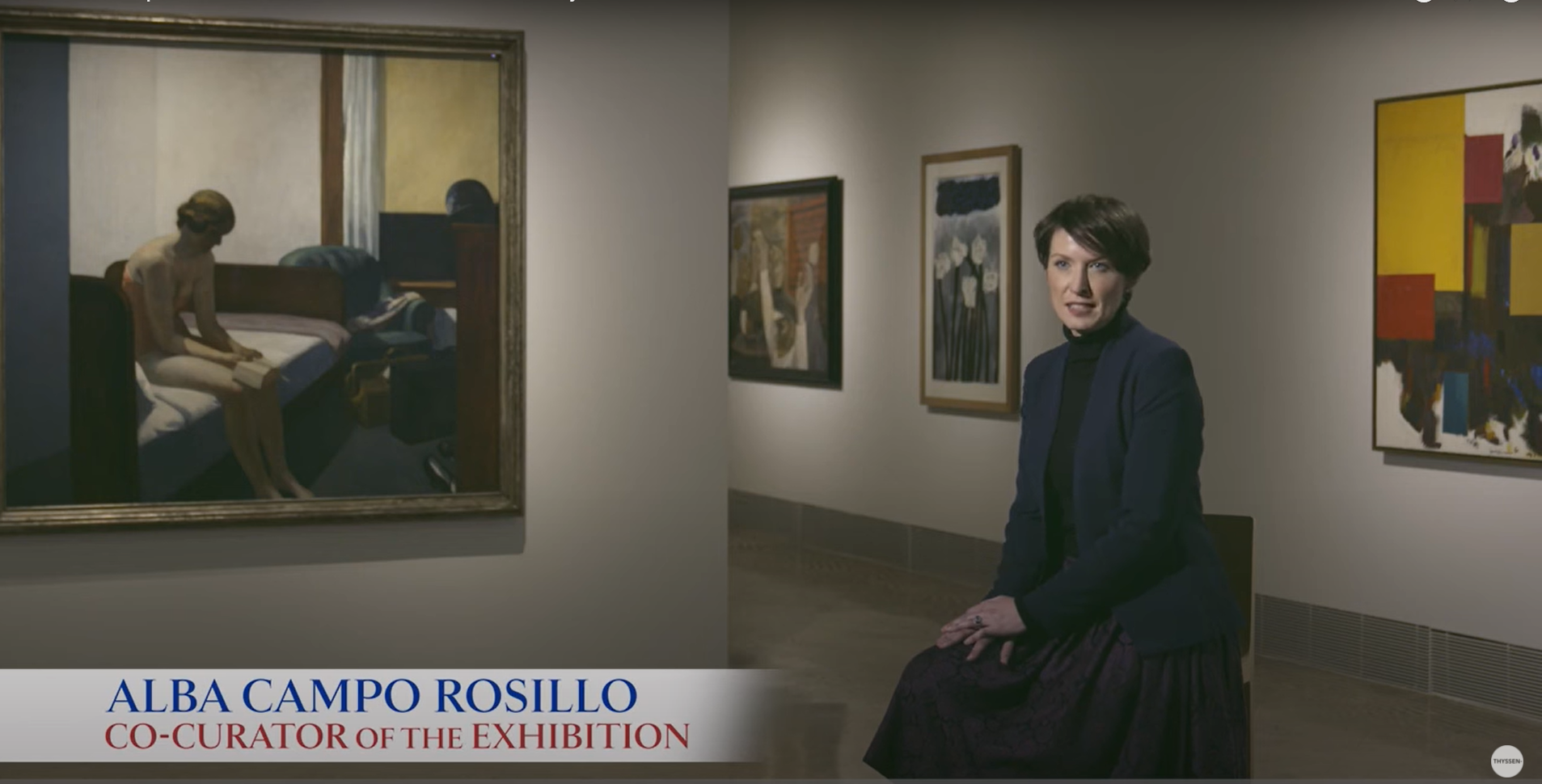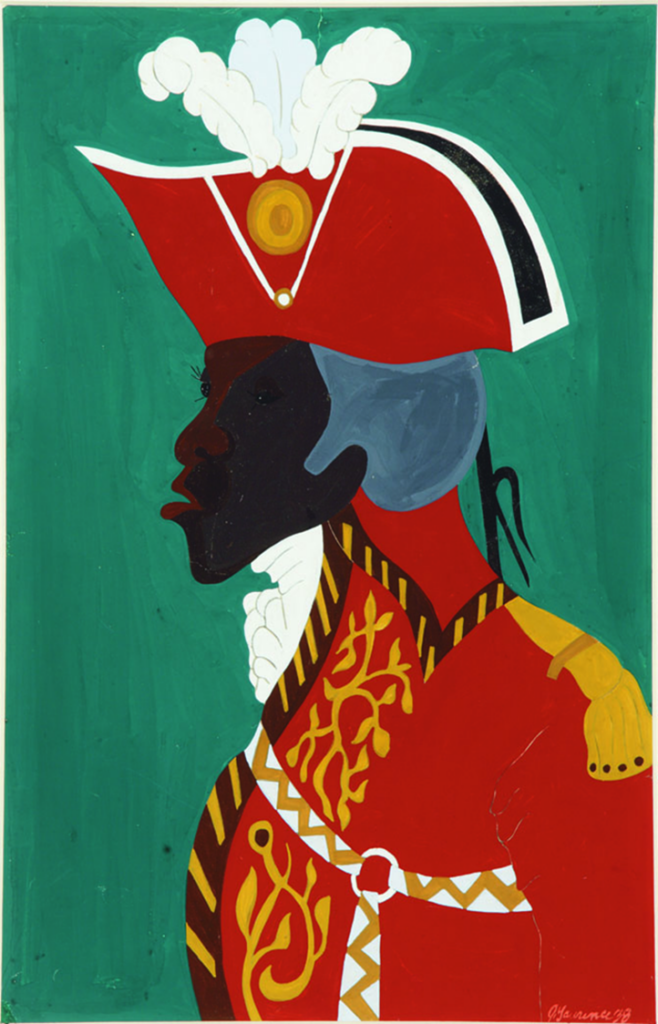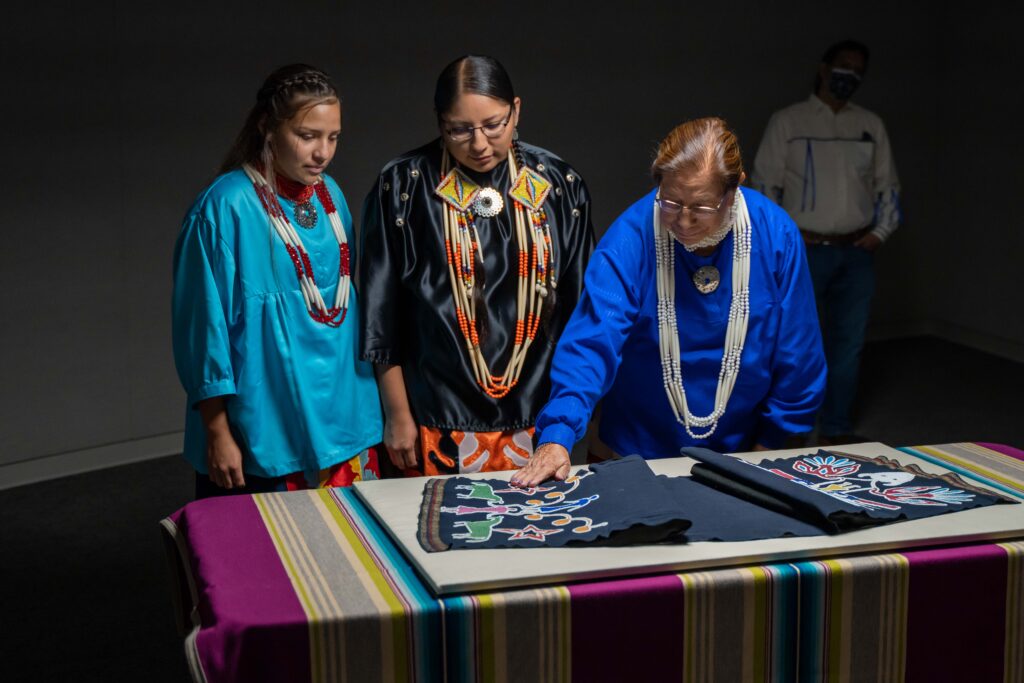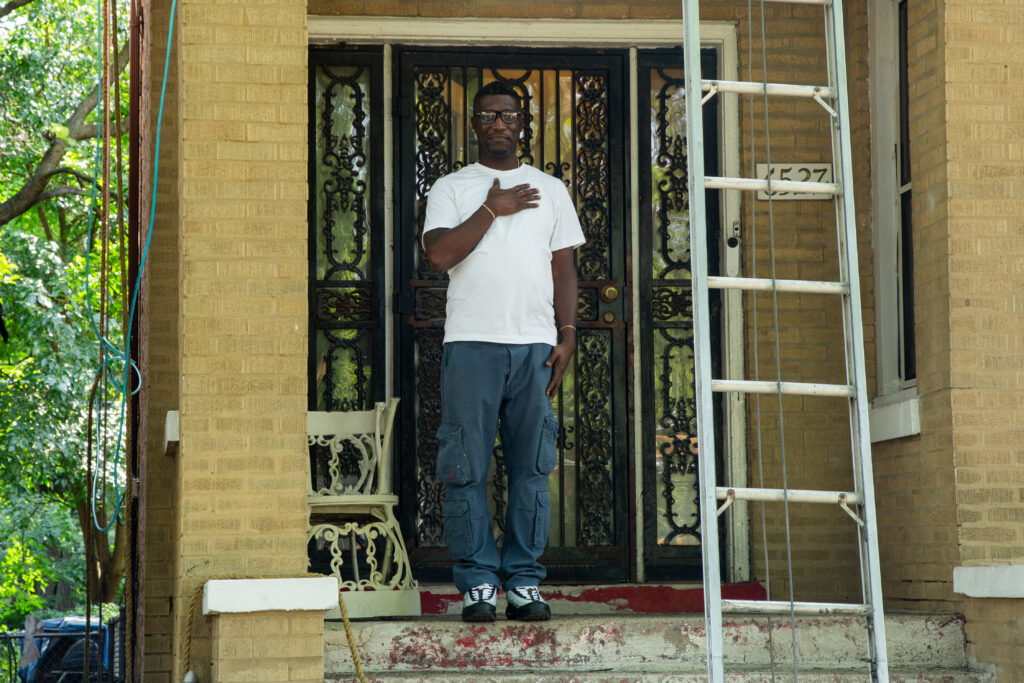The Museo Nacional Thyssen-Bornemisza in Madrid was founded in 1992 upon the principle of displaying Western art for the enlightenment of the public. Art hung on the walls chronologically. For our exhibition, it was important for us to reinstall the collection through a thematic perspective and provide context to the works using wall texts and labels. The collection has a white and European focus, and therefore the galleries´ interpretation had a lot of work to do explaining how the works are not representative of the past and present of the United States´ inhabitants and cultures. Our view aims to show rich, complex histories and cultures that we make available through the exhibition, social media, national radio, television, public programs, and the upcoming symposium.
I work in the Modern Painting department at the Museo Nacional Thyssen-Bornemisza in Madrid as the Terra Foundation Research Fellow. For the exhibition, I believe it is crucial to have a map at the entrance to display the historic creation of US borders along with New Spanish and Indigenous presence; in 1819 Spain held one-third of the current contiguous US territory. The map was an important piece for the interpretation of the works in the exhibition because in Europe there is sometimes a limited knowledge of the history and geography of the US and about the interaction among Native American, Spanish, and American relations. In addition to this, one section of the exhibition is called Hemisphere. I grouped works that show places like the St. Anthony Falls in Minneapolis, which France, Great Britain, and Spain all aspired to own, and which illustrate imperial rivalries. This section also includes paintings depicting Caribbean and Latin American sites, which I feature as part of the US strategy to spread its area of influence across the hemisphere.
This fellowship has been a great chance to build an Americanist network in Spain. Among other initiatives, I have partnered with the curator of ethnology of the Museum of the Americas to hold a series of conversations about Indigenous cultures featuring works from the Museum of the Americas and Museo Nacional Thyssen Bornemisza.
The International Symposium on American Art runs on June 9—10, 2022, and brings together scholars, curators, and experts to analyze movements and artists from new and critical perspectives in American Art. Through this fellowship, I can tell the many stories that connect the US and the Americas at-large with Spain. For further information on registration, speakers, and schedule, please visit the museum’s website.





